Photos by Steve Gross & Susan Daley
My late wife and I moved into our home on Manhattan’s Upper West Side in 1965. The dwelling is one in a row of nine brownstones built in 1890 in the English-basement mode; that is, with a stoop to the parlor floor, and the basement a half-storey below curb level. The first owner–occupants were the Schweers family, who moved in during the spring of 1890 and remained in residence for 75 years.
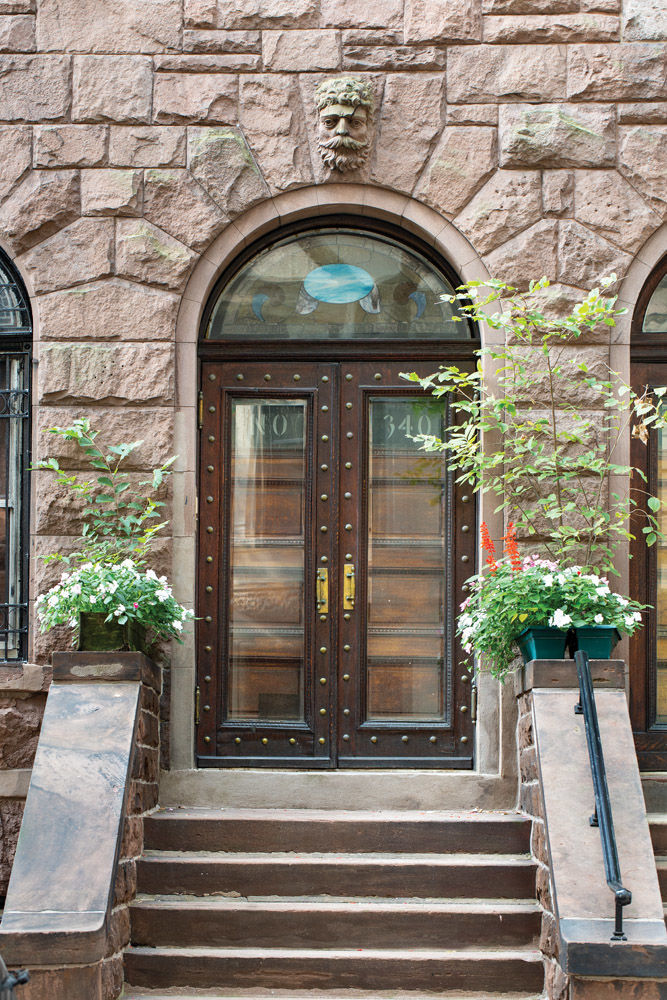
The street façade and stoop are clad in brownstone. The parlor-floor entrance is surmounted by a stained-glass fanlight, over which a face is carved in the stone.
Sensitively preserved in all its Victorian glory, the house with high ceilings, handsome woodwork, and stained glass feels opulent. Yet, when it was built as part of a speculative row, in 1890, it was not as a millionaire’s house. Today the interior feels timeless.
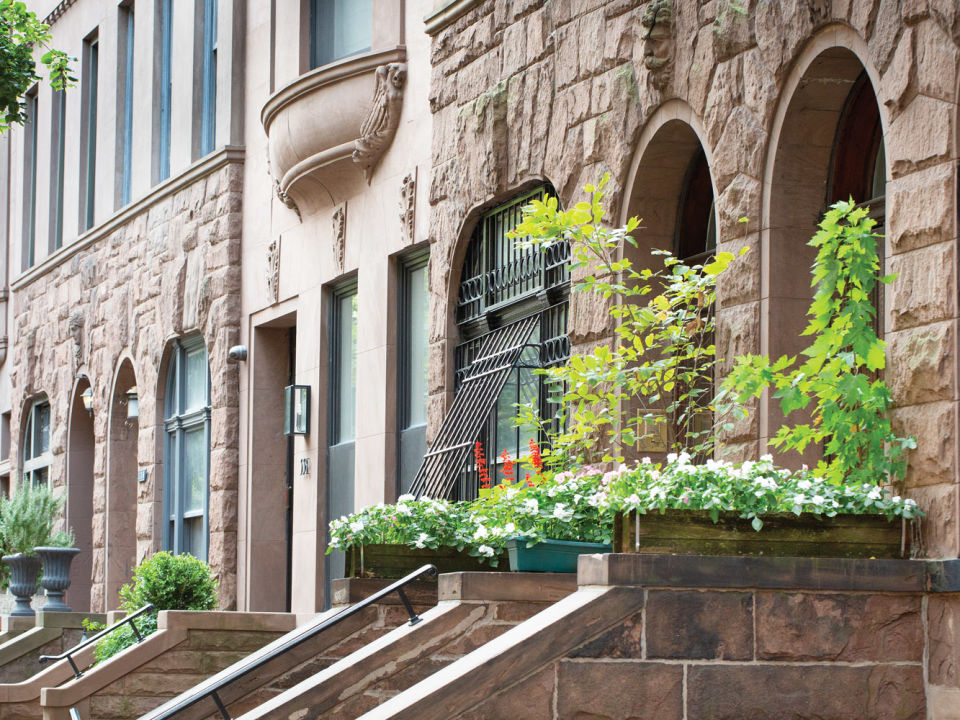
Elements of the Romanesque façades are different from those of familiar Italianate rows. The arched windows are a beautiful focal point.
After Papa Schweers died in the first decade of the 20th century, little work was done on the house. The family did add direct electrical current through the arms of the parlor chandelier (the gas connection remained); they installed a gas stove to supersede the kitchen’s coal stove, and replaced an original metal bathtub with a clawfoot tub—in the house’s only full bathroom. (The Victorians would have regarded as weird the modern mania for multiple bathrooms.)
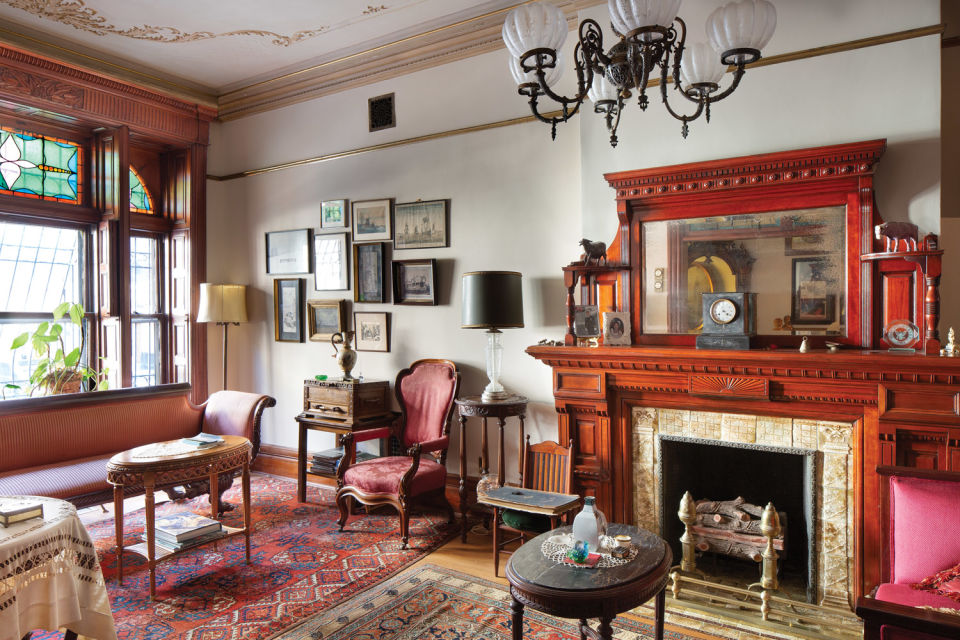
Victorian-period furniture acquired over time fills the parlor. The firebox has a heating unit behind a ceramic radiator in the form of faux logs.
When we arrived, the house was, in truth, a wreck, but our only option, financially, was to move right in and live there. This neighborhood in the West 80s was at the time considered to be deteriorating and unsuitable for conventional mortgage loans. By 1965, the flat roof should have been replaced four times. When I first saw the 17′ x 19′ kitchen, it was by the light of a single 25-watt bulb. The flooring appeared buckled, but I thought it was a trick of the dim light. No, the hot-water tank next to the long-unused coal stove had leaked for years, and as a result the sub-floor and joists had rotted. Had we not acquired the house when we did, the coal stove would have fallen into the cellar.
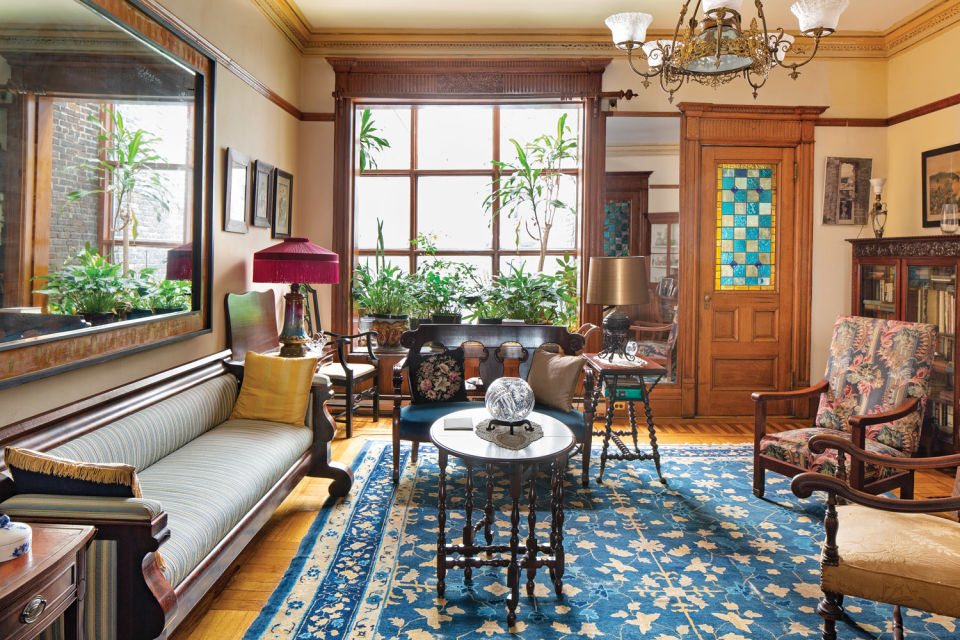
From the rear parlor, once the formal dining room, a door leads to a service area with china closets, a butler’s sink, and a stair to the kitchen.
Similarly, the advanced ages of the “children” who occupied the house meant that they had not recognized leaking waste lines, until plaster ceilings came down. The white and gold-encrusted Art Nouveau wallpaper in the front parlor, coming off the walls, had turned bottle green; we only discovered the original colors accidentally.
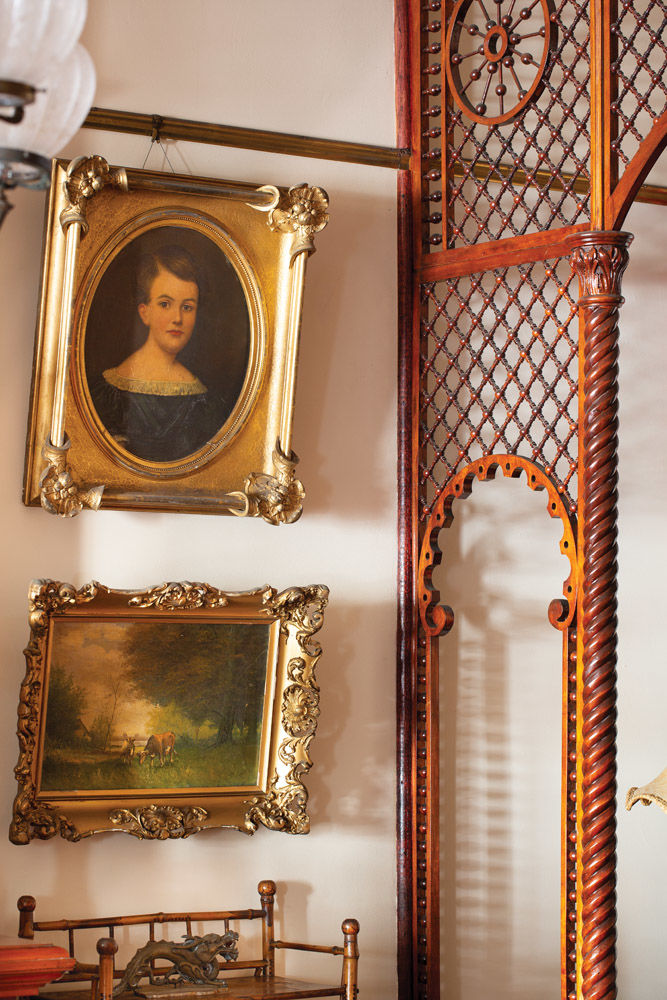
The parlor’s fretwork screen has Aesthetic Movement and Moorish design elements.
I was a government employee receiving a regular salary, but it was not munificent. We used up our savings buying the house, then borrowed what money we could from parents to cover repairs that had to be done immediately: the roof, electrical wiring, two new bathrooms, and the heating system. We were reduced to refinishing the house one room at a time, as money became available. As it turned out, that was useful, as it gave us time to think things through. I had learned to paint, which involved plastering and spackling. We bought $500 worth of paint and it lasted 20 years. Wallpaper was out of the question; it was altogether too expensive. My wife wanted different colors in different rooms, but I explained that while I had learned to paint I had not learned how to estimate the amount of paint each room might require: one color had to cover the whole house.
See more brownstone interiors
My wife, Barbara, decided we did not need three closets plus the butler’s pantry, which sits between the kitchen and the family’s dining room on the basement level. So I carefully took down the wall separating the kitchen from the closets, and she designed a kitchen where the closets had been. The original basement kitchen became a family room. I reused the doors and the trim to create two closets in the family room.
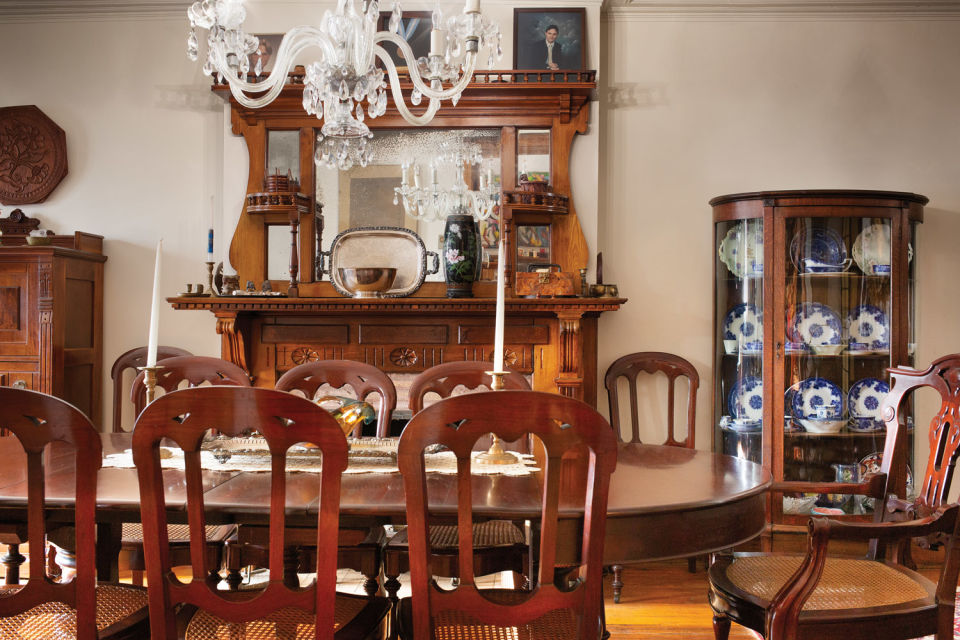
The dining room, at the front of the basement level, is lit by a glass chandelier made in Czechoslovakia in the 1930s. It was purchased from a used-furniture dealer in the early 1960s.
Considered middle-class housing when it was built, this house nevertheless was well constructed and boasted handsome woodwork, high ceilings, and plaster cornices, all of which survive. The Moorish-style fretwork, too, is original. It’s unknown whether it was included at the initiative of the builder, or requested by the Schweers family. It may have been that this was the “model home” in the row of nine, and thus fancied up with finer details to show prospective owners all the extras—which, I suspect, would have been ignored by most buyers.
Eventually, the house was restored, as it deserved to be. We repaired all of the original stained glass, and electrified the chandeliers in the parlors. Young, professional decorators conserved and restored the painted ceiling in the front parlor. Barbara stripped all of the woodwork in the house, refinishing it with renewable shellac; she said she wanted the next restorer to have an easier time of it. The stripping took her three years, as she worked on it an hour or two at a time.
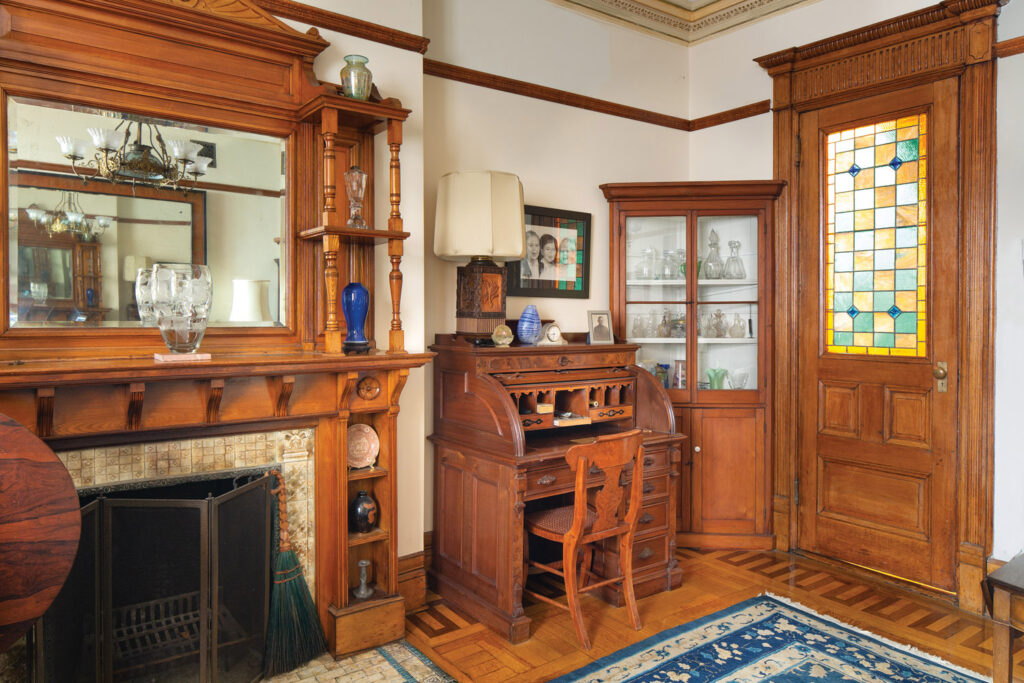
Bedrooms in the house, still without wallpaper, are purely functional. The original bathroom, with the clawfoot tub that was added early in the 20th century, is authentic.
As to the furnishings, we were incredibly lucky. My father-in-law taught himself cabinetmaking; he became the equal, I do believe, of the best professional artisans of his time. He used 18th- and 19th-century furniture techniques. We were almost his only clients. We collected old, battered Victorian furniture that friends and friends of friends would have thrown out otherwise. I used to joke that we gave him firewood and he returned to us furniture.
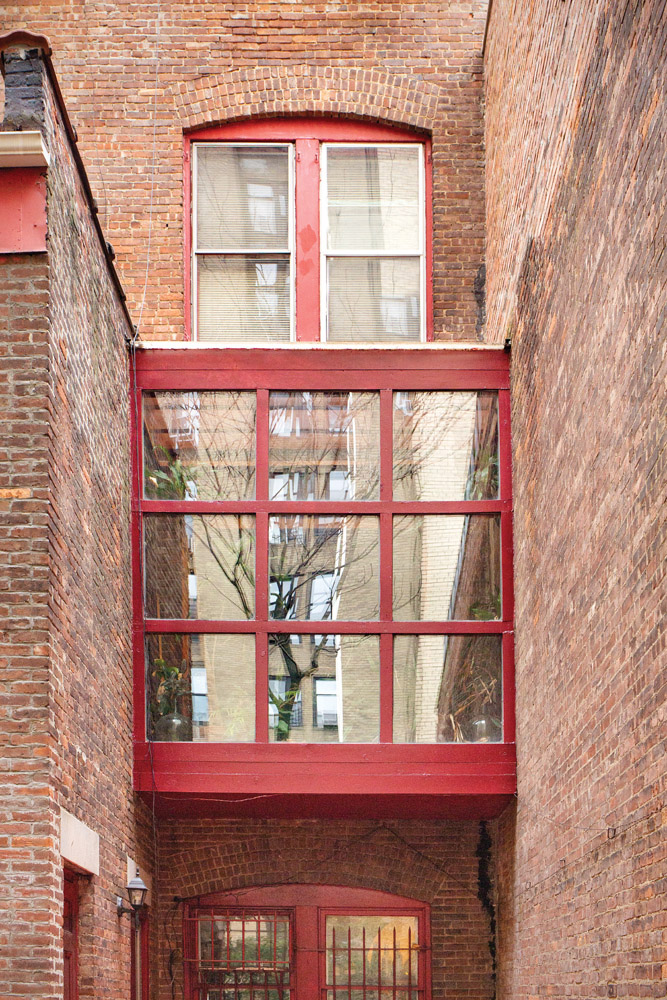
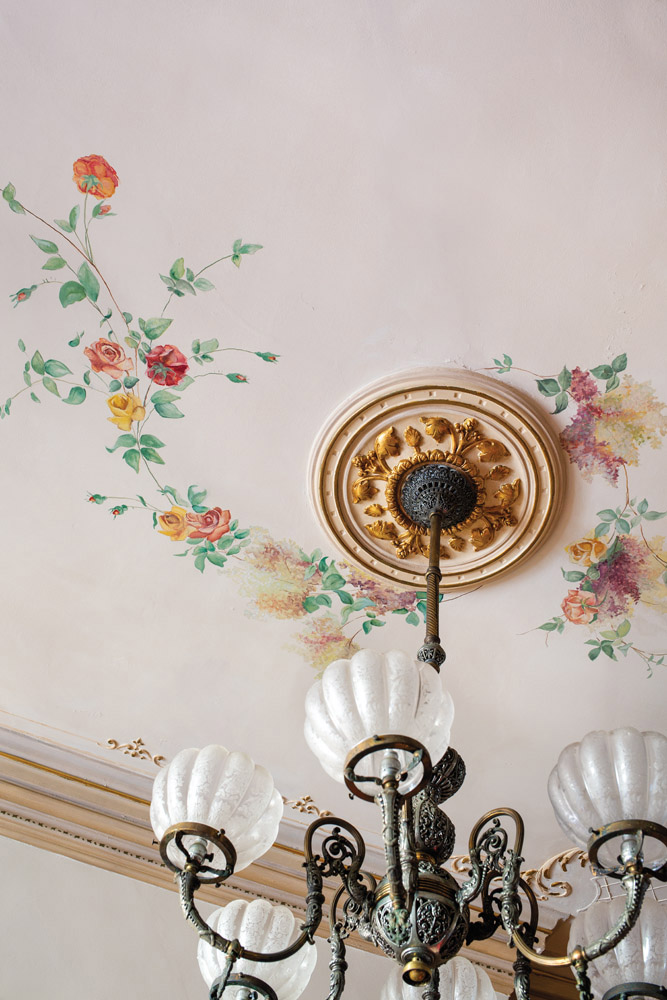
to electricity, are original to the house. The handpainted
decoration is original and has been professionally
conserved.
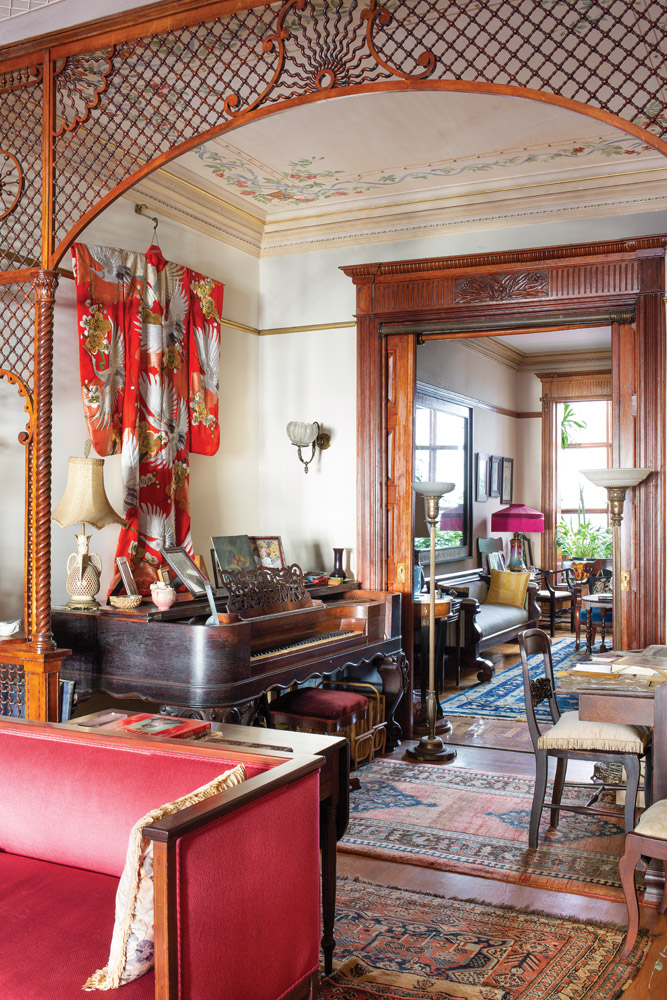
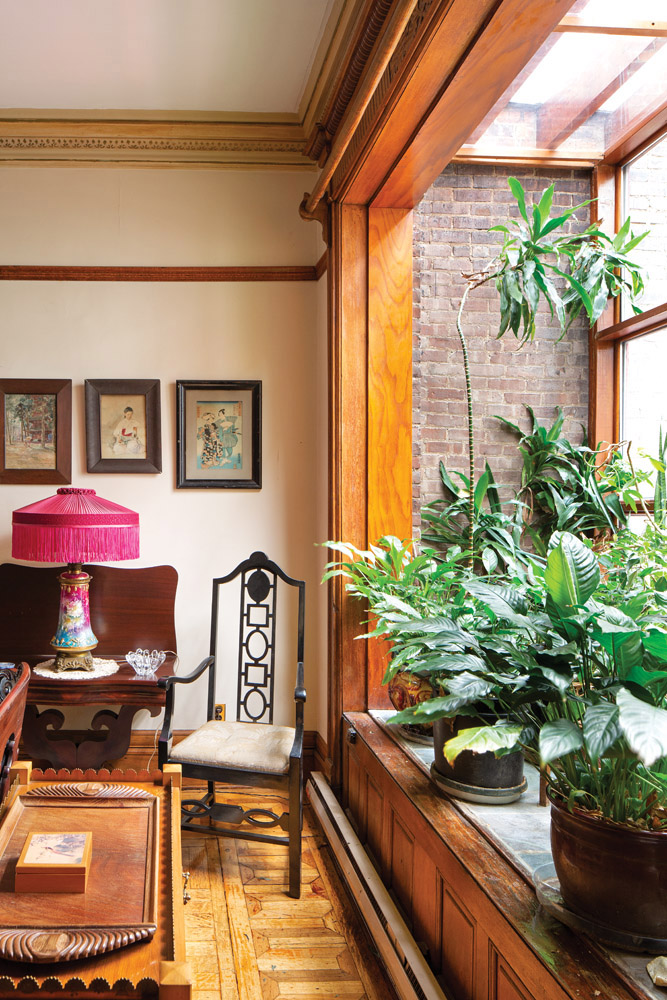
Resources
Brownstoner Brooklyn/NYC real estate, interiors, referrals, events, newsletter, podcasts
gaslights Allen’s Antique Lighting Fine antique lighting ca. 1840–1920, American & European, in all Victorian styles; antique shades
Appleton Antique Lighting Antique lighting including gaslight era
C. Neri Antiques Antique astral, argand, sinumbra, student lamps
House of Antique Hardware Victorian reproductions (sconces, pendants, chandeliers)
King’s Chandelier Co. Victorian gaslight reproduction chandeliers & sconces, crystal fixtures
Rejuvenation Several simple reproduction designs, also antique lighting, mostly from 1900 & later
Victorian Lighting Works Authentic reproductions in many sizes & configurations
Vintage Hardware & Lighting Antique & reproduction period lighting with a wide selection







